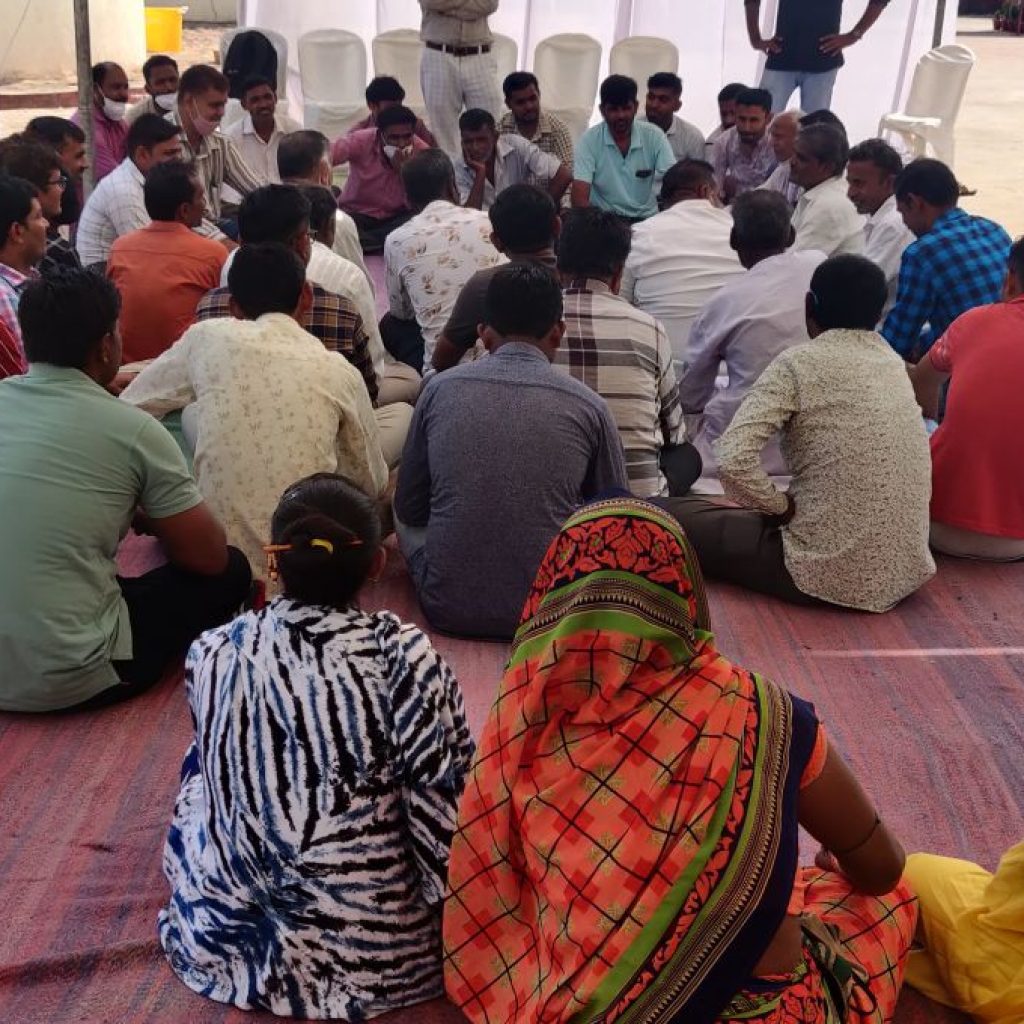Recently Tom Daley, the queer athlete, and Tokyo Olympics Gold medalist drew a lot of media attention. However, headlines were not purely reserved for his sporting success but instead there was an air of breathlessness about the fact the chap knits! Blame the numerous pictures of him knitting his medal pouch and Tokyo Olympic-themed cardigan that now suddenly started flocking the internet, despite the fact that he had always been knitting!
Since, there have been numerous media segments discussing whether Daley has now injected some pizzazz into knitting. Poor old knitting. You take a ball of long, flaccid nothing, two sticks and you turn it into a useful item. Isn’t that pizzazzy enough? It isn’t, and I’ll tell you why. Knitting still has an image problem, hooked on the fact it’s seen as a hobby done by women. Oh, add to that – old women, and housewives – the worst, most easily dismissed kind. So now, a past-time routinely done by women is suddenly interesting and reinvigorated because a man’s doing it.
Tired old gender stereotypes, clinging on. One can argue that this definitely isn’t newsworthy and that it should be entirely unremarkable for a man to knit, sew or crochet as his heart desires. Yet, here we are! While today Daley is being hailed as a knitting ambassador of sorts, shouldn’t it just be because he’s good at it and he shows it can be fun as well as useful and meditative? Being interested in a subject because a man’s doing it but we think of it as a women’s work is just reinforcing stale gender stereotypes, and I’ve simply all had enough of that!
This, in turn, led me to think about all the women, especially in Gujarat’s Kutch who, across centuries, had performed and continue to perform ‘Femmage’, an umbrella term devised by artists Miriam Schapiro and Melissa Meyer to include activities historically assigned to women — think embroidery, sewing, cooking, and so on, and in turn, have been invalidated by the dominant art discourse. Had women, all along, been perpetuating their subjectivity through this coded form of authorial agency? Did their unique encounters with time, a multiple of eternity, impress upon their consciousness alternative forms of art-making?
The gender of artists may be one factor that shapes artistic choices in an otherwise heterogeneous object market. And an example of artistic difference resulting from cultural gender norms is seen in the sparkling embroideries of Kutch, the only female ‘hobby’, that has gone on to contribute in large measures to the cultural history of women’s embroidered textiles anywhere in the world. Men are not unskilled or incapable of doing embroidery work, but one need not point to biology in any effort to explain why it is more common to see women producing embroidered textiles. In more explicitly sexist eras of Kutch’s art history, the textile arts were a medium that women were permitted and encouraged to adopt.

The types of crafts that were introduced among women, euphemistically called ‘feminine hobbies’, since they’re associated with the home, came to be stitching, embroidery, crocheting, and knitting. If we examine these crafts, we will see that their femininity” ‘lies primarily in the fact that they are essentially time-consuming, provide little income, and are not easily upgraded to yield a higher price. These crafts rarely prove to be a stepping stone into a small scale industry that would offer greater incomes to women.

And yet, Kutch embroidery has managed changing its reputation, that from an exclusively household craft that was a leisure time activity for women to a highly valued commercial skill went on to been a long one. Thanks to the likes of Pabiben, a tribal Rabari woman who runs pabiben.com, an artisan enterprise that empowers tribal women to become economically independent and keeps the Rabari embroidery tradition alive, and Shrujan Trust, (a not-for profit organisation that works with women from about 12 different Kutchi communities in over 120 villages) that were among the first to recognise its potential as a practical means to enable craftswomen to earn a home-based, sustainable and dignified livelihood. These feminine hobbies were clearly a mode by which women articulated their creativity and immortalised elements of their identity.
Despite this refreshing abundance of organisation and individual-led initiatives that are committed to making visible female artistic lineages traditionally marginalised, it feels, still, like we are only beginning to scratch the surface. Art history and contemporary theory, in particular, have a lot of catching up to do.

Why, for instance, the more visible job that of weaving on a loom, that requires a special skill is most often than not done by men. The more laborous but lower paid work that of hand spinning is done by women? While Khamir, a crafts-based organisation, through its Upcycled Plastic Weaving initiative (introduced to reduce the ecological impact of plastic waste) has helped create an opening for women vannats or weavers allowing for them to sit on the loom, giving them the space to develop their weaving skills, and also understand markets, yet there are only a handful of women weavers, and out of them only Rajiben Vankar and Champaben Siju, have been able to carve a niche for themselves, rising to the ranks of entrepreneurs.
While women are heavily involved in handicraft production, their contribution is often masked by discourses that tend either to ignore or marginalise them, or portray their work as use-value production. Overall, there is very little critical analysis of women’s handicrafts re-invoking Virginia Woolf’s dictum in her 1928 classic, A Room of One’s Own, “I would venture to guess that Anon, who wrote so many poems without signing them, was often a woman.
They’ve been excluded from official art historical canons, invalidated as ‘craft’, not art, and have been allowed perpetuation and circulation only in non-mainstream markets such as village fairs and housekeeping manuals.

The artisanship of female artisans in Kutch is often over-shadowed by the craftsmanship of male artisans as generally, male artisans are the creators of the final product. Crafts that give good returns to the craft person, such as hand block printing, bell-making or weaving, are rarely are practised by women. The skills are a domain of men and are strictly guarded and passed from father to son. A daughter is rarely taught these skills for it is assumed that she will marry, leave the family, and therefore might impart the skills to her new family. Usually, women practice crafts associated with their domestic lives.
Femmage is the counter-narrative to patriarchal pedestalism. Where the latter sought historical validity within the public sphere, through monumentality, through grandiose statues commissioned and created by men, Femmage, instead, adopted the privacy of the domestic space, preserving its traditions through housewives who either passed on object intelligence matrilineally, or served as the intimate audience, receivers of feminine intelligence. Femmage was not pedestalised so much as perhaps passed on through the wedding trousseau.
Take the case of weaving: the more visible job that of weaving on a loom, that requires a special skill is most often than not done by men. The more laborous but lower paid work that of handspinning and hand dyeing is done by women, and they are paid lower wages in comparison. Performing tasks, such as spinning and cutting threads in the weaving industry, is highly repetitive and taxing; involving sitting and working in uncomfortable positions for as long as six to seven hours at once. But these critical jobs are assigned little status or value and rarely factored in when it comes to payment or recognition. This exploitation of women as free or cheap labour subsidizes the crafts industry, especially in a few sub sectors.

The sector is also a diverse one, with a fragmented value chain. Artisans themselves are practitioners of their craft at various levels – from a skilled master craftsman to a wage worker, from a fully self employed entrepreneur to a part time artisan. More often than not, women find themselves relegated to wage work or ancillary work that is largely un-remunerated and does nothing to legitimise their identity as artisans and entrepreneurs.

The collectivisation of women has happened, by design or default, along several lines – from self help groups, to informal collectives to cooperatives, to producer companies. This organisation has often been facilitated by the government as well as the non-profit and private sector, and often, with varying and vested interests and results. Further along the value chain, there are multiple stakeholders, both enablers and inhibitors, impacting the constituency’s strategic interest – the input suppliers, the traders, the middlemen, wholesalers, retailers, exporters and suchlike. The transaction and negotiating power of women artisans and entrepreneurs, with these stakeholders, along this chain, remains challenging.




0 Comments